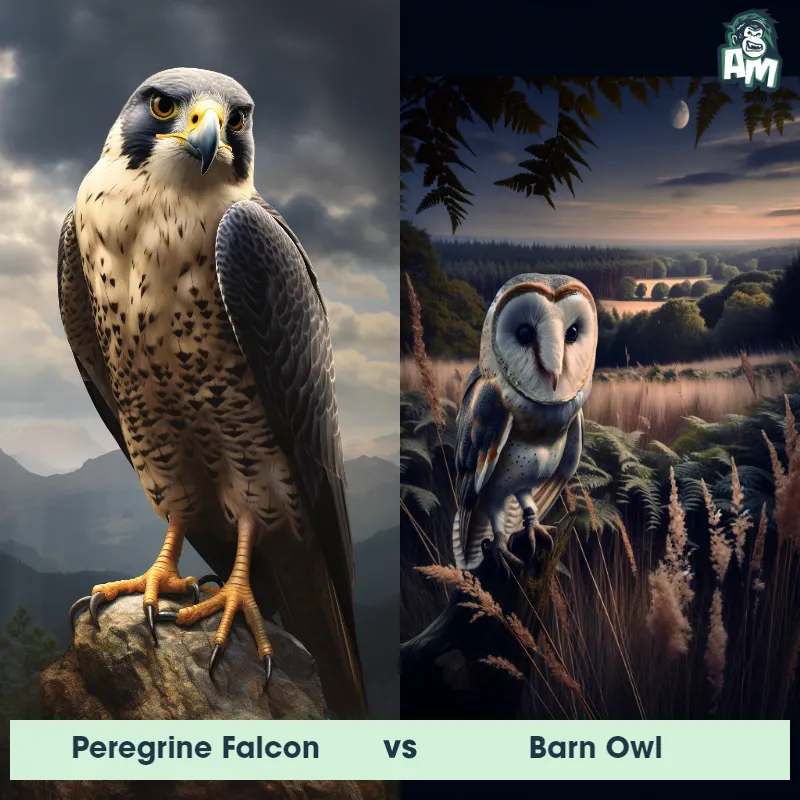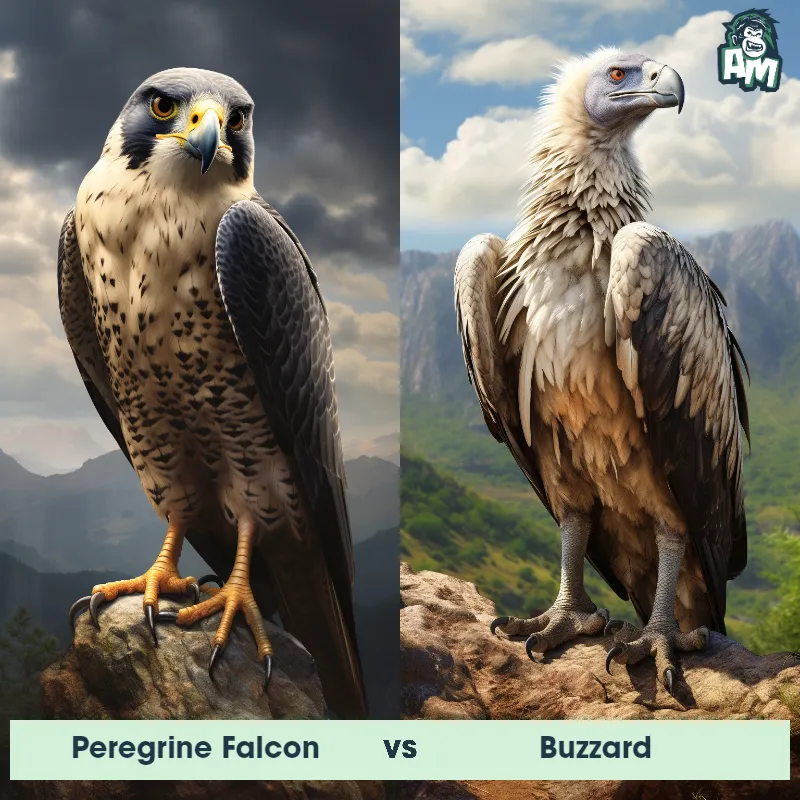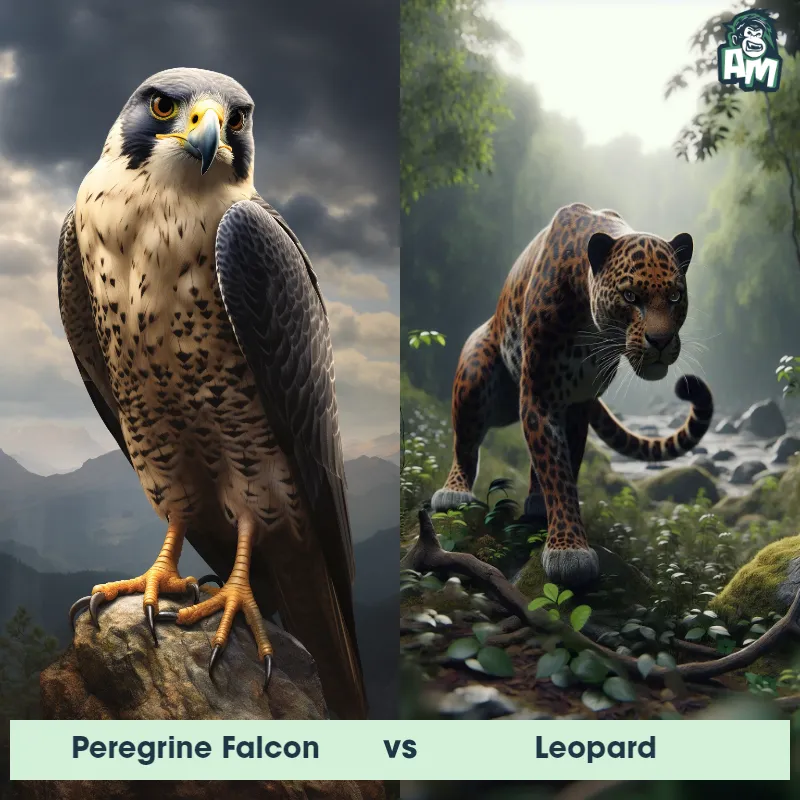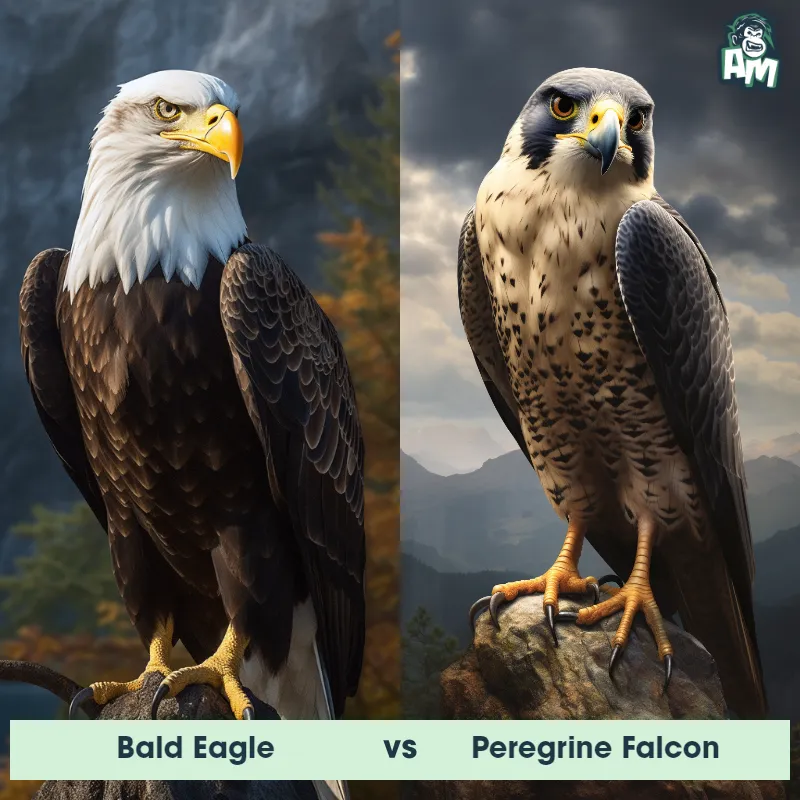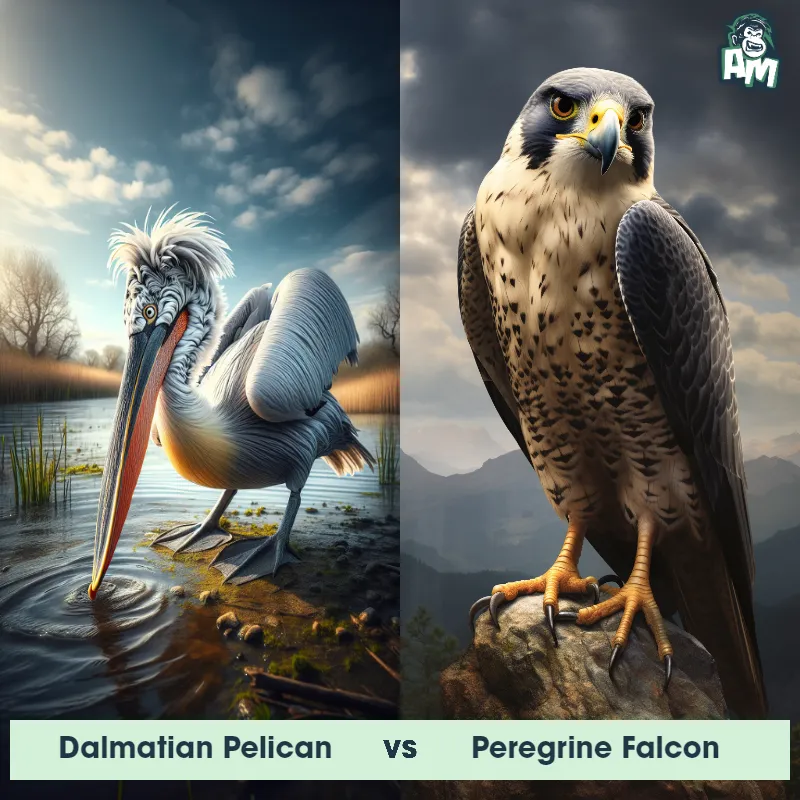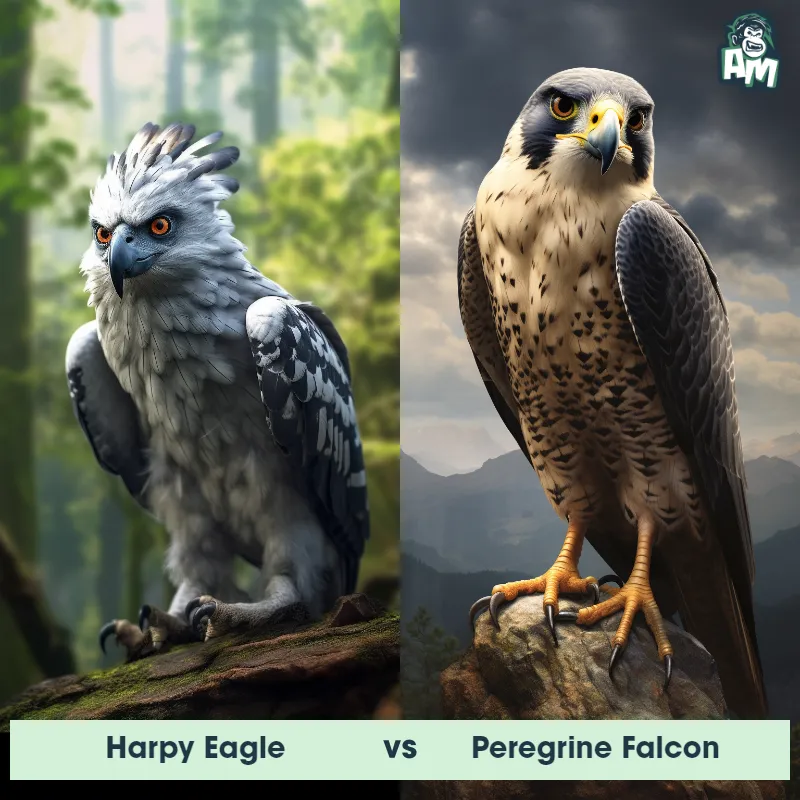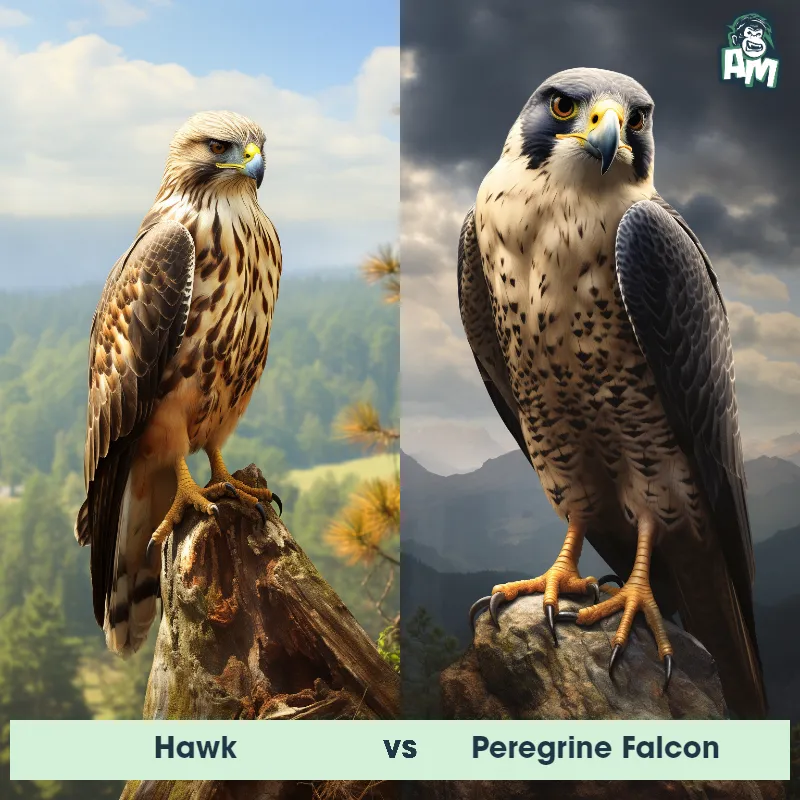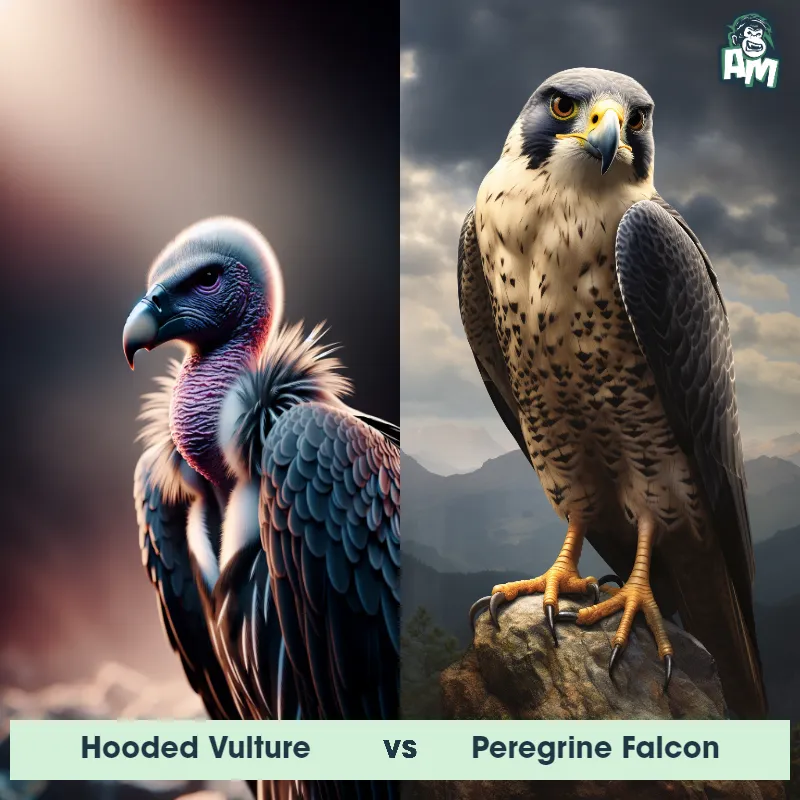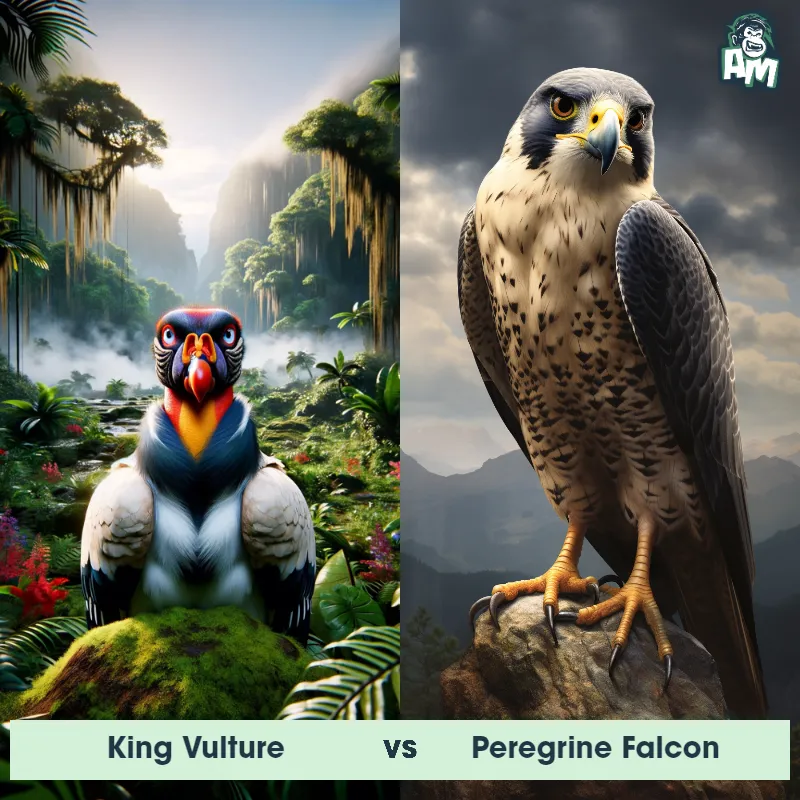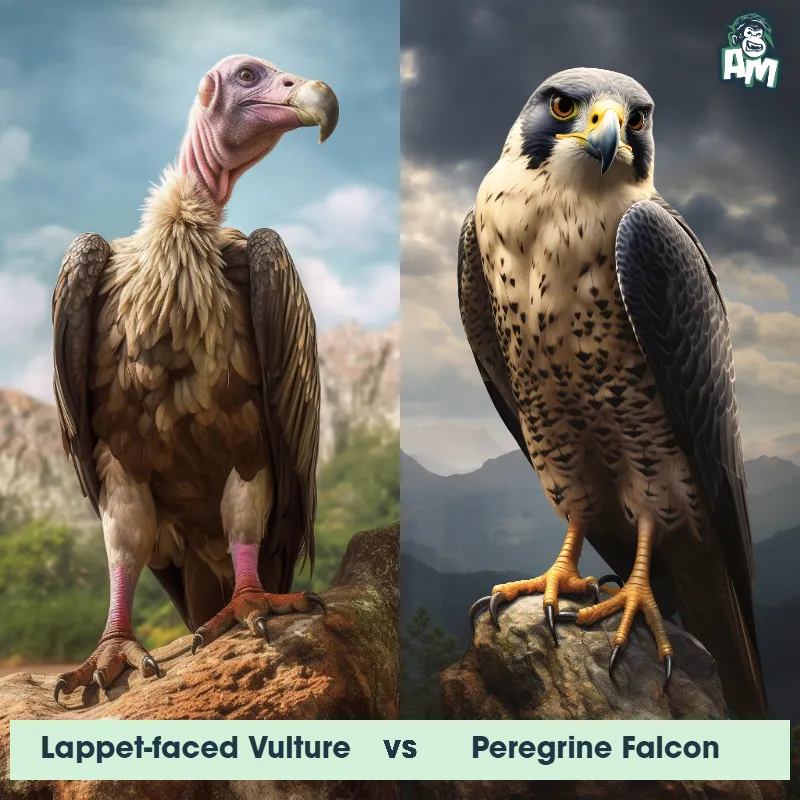The Peregrine Falcon
The Peregrine Falcon, also known as Falco peregrinus, is a magnificent bird of prey found worldwide except for extreme polar regions. This raptor is known for its remarkable speed, reaching speeds of up to 240 miles per hour while diving to catch prey. Peregrine Falcons have a distinct black head with a white cheek patch and a dark "moustache" mark running vertically down its face. They have a compact and streamlined body, sharp talons, and striking yellow eyes. These birds are highly adaptable and are found in various habitats, including forests, coasts, and urban areas.

| Peregrine Falcon | |
|---|---|
| Size | 13.4 to 22.8 inches (34 to 58 cm) in length |
| Weight | 1.1 to 3.3 lbs (0.5 to 1.5 kg) |
| Speed | 240 mph (386 km/h) |
| Key Strength | Incredible speed and strong, sharp talons |
| Biggest Weakness | Less effective in close-quarters combat due to preference for high-speed pursuits |
| Scientific Name | Falco peregrinus |
| Family | Falconidae |
| Habitat | Wide variety including coastlines, mountains, cliffs, cities |
| Geography | Worldwide, from Arctic tundra to desert regions |
| Diet | Primarily birds, occasionally small mammals |
| Lifespan | 8 years - 15 years |

The Peregrine Falcon
The Peregrine Falcon, also known as Falco peregrinus, is a magnificent bird of prey found worldwide except for extreme polar regions. This raptor is known for its remarkable speed, reaching speeds of up to 240 miles per hour while diving to catch prey. Peregrine Falcons have a distinct black head with a white cheek patch and a dark "moustache" mark running vertically down its face. They have a compact and streamlined body, sharp talons, and striking yellow eyes. These birds are highly adaptable and are found in various habitats, including forests, coasts, and urban areas.
Fun Fact: The Peregrine Falcon holds the title for being the fastest animal on the planet, as it can reach incredible speeds of over 240 miles per hour during its hunting dives known as stoops.
| Peregrine Falcon | |
|---|---|
| Size | 13.4 to 22.8 inches (34 to 58 cm) in length |
| Weight | 1.1 to 3.3 lbs (0.5 to 1.5 kg) |
| Speed | 240 mph (386 km/h) |
| Key Strength | Incredible speed and strong, sharp talons |
| Biggest Weakness | Less effective in close-quarters combat due to preference for high-speed pursuits |
| Scientific Name | Falco peregrinus |
| Family | Falconidae |
| Habitat | Wide variety including coastlines, mountains, cliffs, cities |
| Geography | Worldwide, from Arctic tundra to desert regions |
| Diet | Primarily birds, occasionally small mammals |
| Lifespan | 8 years - 15 years |
Peregrine Falcon Matchups
We use AI to simulate matchups between the Peregrine Falcon and other animals. Our simulation considers size, strength, and natural predatory behaviors to determine the most likely outcome.

Can't find the Matchup you want?
Create Your Own MatchupPeregrine Falcon: Diet, Predators, Aggression, and Defensive Behaviors
What do Peregrine Falcons eat?
Peregrine Falcons mainly feed on medium-sized birds like pigeons, doves, and waterfowl. They are skilled hunters known for their remarkable speed and agility in capturing prey mid-flight. They can also consume small mammals like rodents or even insects if necessary.
Do Peregrine Falcons have any predators?
Peregrine Falcons are apex predators themselves and do not have many natural predators in the wild. However, their eggs and chicks may sometimes be targeted by other birds of prey, such as Great Horned Owls or eagles. Larger mammals like raccoons or snakes could also pose a threat to their young.
Are Peregrine Falcons aggressive?
Peregrine Falcons are known to be territorial and can exhibit aggressive behavior towards intruders or potential threats to their nest. They will defend their territory vigorously, especially during the breeding season, when they are protecting their young.
Do Peregrine Falcons engage in fights?
Peregrine Falcons are not typically known for engaging in physical fights with other birds or animals. They rely more on their speed, agility, and hunting skills to outmaneuver their prey or competitors. However, they may defend themselves aggressively if threatened or provoked.
How do Peregrine Falcons defend themselves?
Peregrine Falcons are known for their incredible speed during flight, reaching speeds of over 240 mph when stooping to catch prey. This speed, along with their sharp talons and powerful beak, serves as their primary defense mechanism. They can also use their agility and flight maneuvers to evade predators or threats.
What is the Peregrine Falcon's biggest weakness in a fight?
Despite their impressive aerial abilities, Peregrine Falcons are vulnerable to larger birds of prey, such as eagles or owls, that can outmatch them in size and strength. In a fight, a Peregrine Falcon may struggle to defend itself against a larger predator that can overpower it physically.
Fun Fact: Despite their impressive speed, Peregrine Falcons are actually quite small, with an average length of about 15 inches and a wingspan of around 3.3 feet.
Fun Fact: Peregrine Falcons have a unique hunting technique where they ambush their prey from above, using their incredible speed and maneuverability to strike with deadly accuracy. They primarily feed on other birds, such as pigeons, doves, and waterfowl, plucking feathers off their prey before consuming them.



